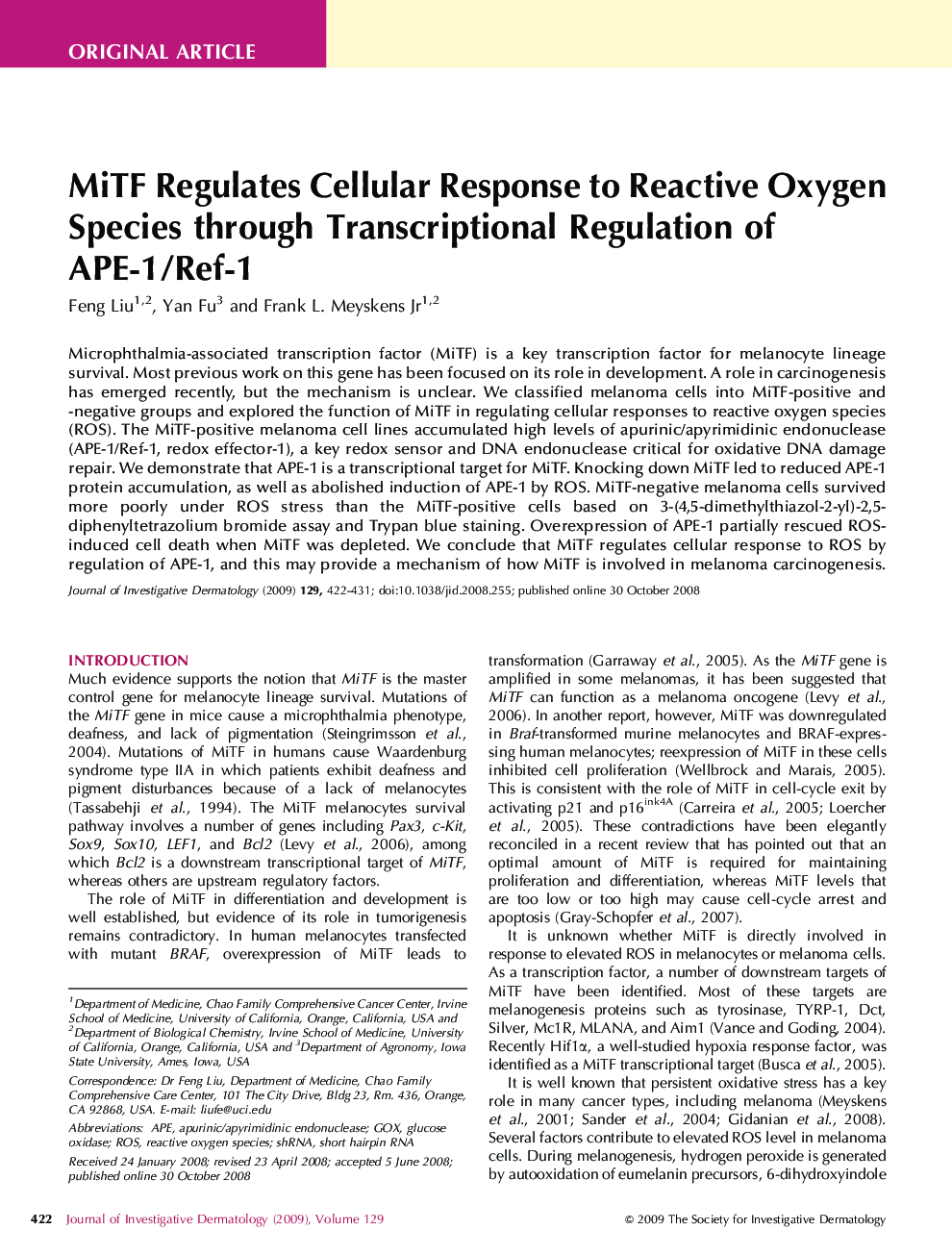| کد مقاله | کد نشریه | سال انتشار | مقاله انگلیسی | نسخه تمام متن |
|---|---|---|---|---|
| 3217262 | 1203596 | 2009 | 10 صفحه PDF | دانلود رایگان |

Microphthalmia-associated transcription factor (MiTF) is a key transcription factor for melanocyte lineage survival. Most previous work on this gene has been focused on its role in development. A role in carcinogenesis has emerged recently, but the mechanism is unclear. We classified melanoma cells into MiTF-positive and -negative groups and explored the function of MiTF in regulating cellular responses to reactive oxygen species (ROS). The MiTF-positive melanoma cell lines accumulated high levels of apurinic/apyrimidinic endonuclease (APE-1/Ref-1, redox effector-1), a key redox sensor and DNA endonuclease critical for oxidative DNA damage repair. We demonstrate that APE-1 is a transcriptional target for MiTF. Knocking down MiTF led to reduced APE-1 protein accumulation, as well as abolished induction of APE-1 by ROS. MiTF-negative melanoma cells survived more poorly under ROS stress than the MiTF-positive cells based on 3-(4,5-dimethylthiazol-2-yl)-2,5-diphenyltetrazolium bromide assay and Trypan blue staining. Overexpression of APE-1 partially rescued ROS-induced cell death when MiTF was depleted. We conclude that MiTF regulates cellular response to ROS by regulation of APE-1, and this may provide a mechanism of how MiTF is involved in melanoma carcinogenesis.
Journal: Journal of Investigative Dermatology - Volume 129, Issue 2, February 2009, Pages 422–431